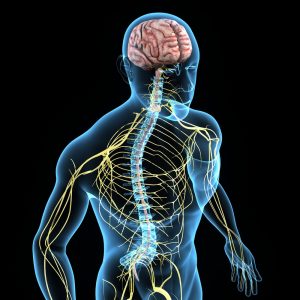A Day in the Chiropractor’s Office

From allergies and asthma to sciatica and chronic cardiovascular symptoms, there’s nothing quite like a day in a chiropractor’s office. We see patients with wide ranging issues like these and more every day. In one room, we may have a patient struggling with depression and in the next room, a patient with auto-immune deficiencies, and ages range from infants to seniors.
Working with the nervous system is a privilege and we are thankful we get to share our love of healing. Did you know the nervous system is responsible for the following:
- Enables the body to adapt to different types of environments
- Continuously monitors all organ functioning
- Acclimates and amends biological processes to sustain overall health
- Maintains internal homeostasis (balance within the body)
- Transmits signals to the brain ensuring needs are met[.1]
The nervous system works in two very specific ways:
- Nerves receive information from the body and other external stimuli and send it back to the brain for analysis and interpretation.
- The brain then uses these transmissions to control all the functions in your body.
Spinal motion is the motor that powers the brain. It’s what allows for healthy nerve input, optimal brain response, and healthy body functioning. Dr. Tsun-Nin Lee, a respected general practioner, coined a now famous theory of health called “Thalamic Neuron Theory.” In the theory, Dr. Lee explains that “the central nervous system is involved in all disease conditions as the nervous system not only processes incoming physical and chemical information from the body, but also sends out commands in order to maintain homeostasis-balance-health for the entire body.” 9
[.1]Schulkin, J. “Allostasis, Homeostasis, and the Costs of Adaptation.” Cambridge University Press, 2004 (Zimmet et al., 2001).

